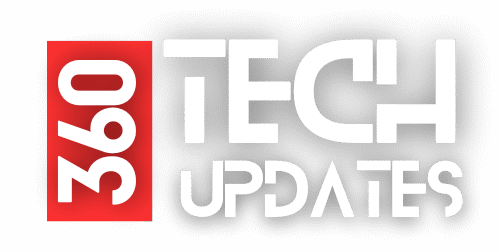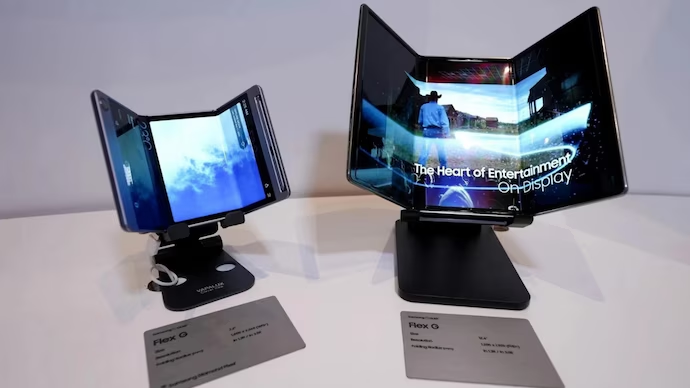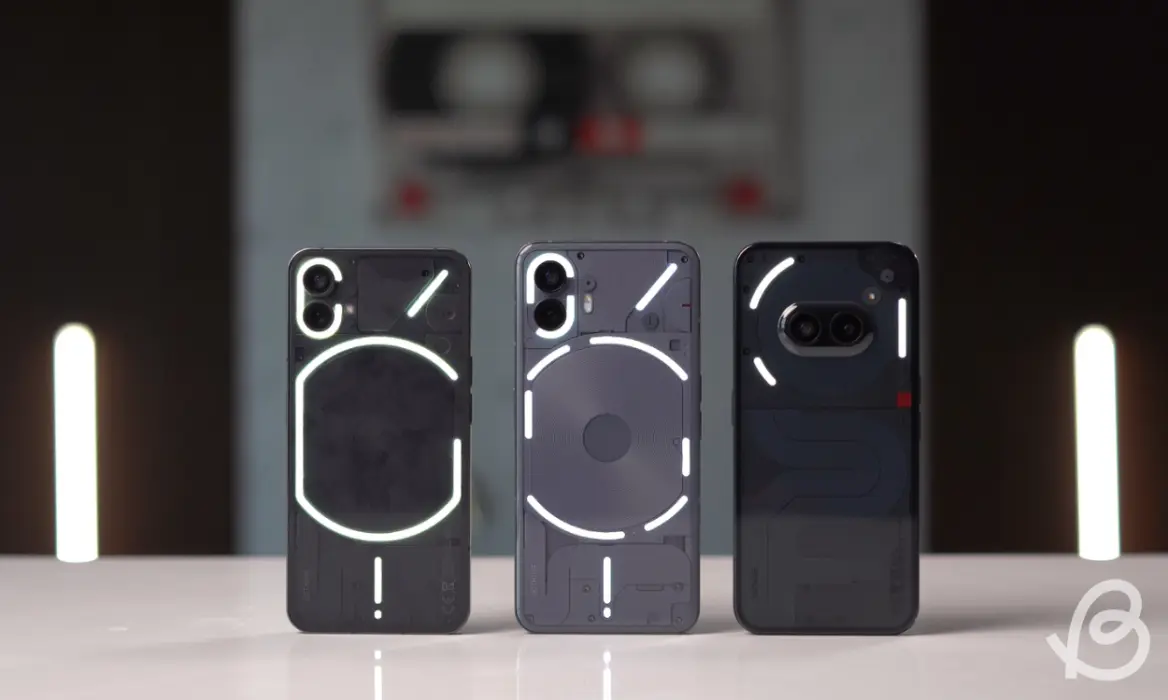Samsung has long held the crown as the pioneer of foldable smartphone technology. From the launch of the original Galaxy Fold in 2019 to the refined Galaxy Z Fold and Z Flip series, the brand has consistently pushed the boundaries of mobile innovation.
With each generation, Samsung has improved durability, software experience, and user adoption—turning foldables from a futuristic concept into a practical everyday tool.
Now, the company is preparing to take another bold leap. Reports confirm that Samsung’s First Tri-Fold Smartphone is slated to launch by the end of this year. Internally known by codenames like “Galaxy G” or “Multifold,” this new device will feature a triple-folding display that transforms into a nearly 10-inch tablet, offering a seamless blend of smartphone portability and tablet productivity.
This tri-fold concept isn’t just another gimmick—it could completely redefine the way we use mobile devices.
With enhanced multitasking, superior screen real estate, and innovative form factor engineering, Samsung’s First Tri-Fold Smartphone could mark the beginning of a new era in mobile computing. As the foldable market matures, this tri-fold model may be the next evolution that sets a new industry standard.
Also Read: OnePlus Nord CE 5 Set to Launch in India on July 8: Expected Price, Specs, Design & More
What is a Tri-Fold Smartphone?
A tri-fold smartphone represents the next evolution in foldable design, building upon the success of traditional single-hinge foldables like the Galaxy Z Fold series. While standard foldables open like a book with one hinge and two display segments, a tri-fold smartphone goes a step further—featuring two hinges and three distinct folding sections.
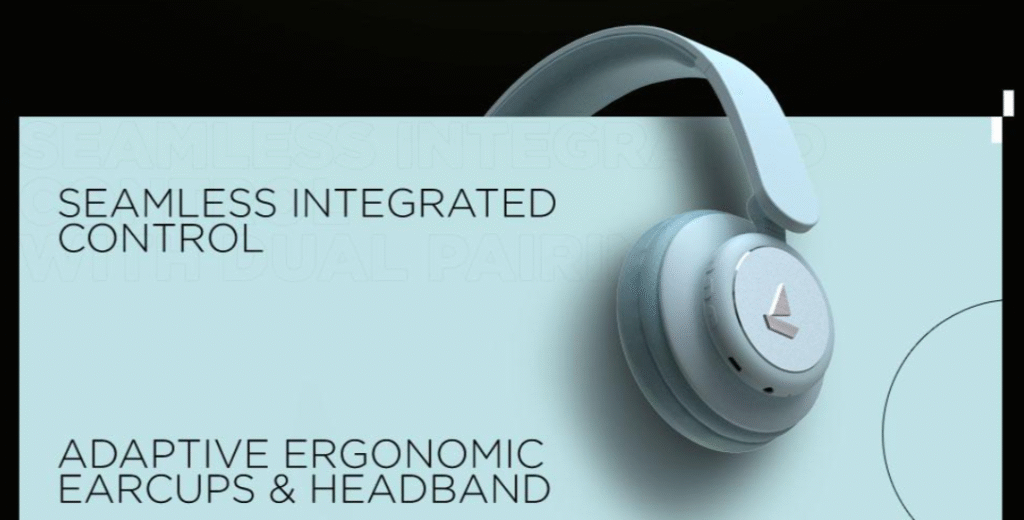
This allows the device to fold in a “Z” or “G” shape, depending on the hinge direction, offering multiple configurations for use and portability.
In practical terms, Samsung’s First Tri-Fold Smartphone is expected to feature a large primary display—nearly 10 inches when fully unfolded—that collapses into a compact smartphone-sized device when closed.
The central segment serves as the main screen, while the two side panels fold inward (or outward, depending on the model) to protect the display or serve as cover screens.
How Does It Work?
The tri-fold mechanism uses dual hinges and highly flexible ultra-thin glass to achieve this layered folding motion. Each hinge operates independently, allowing the device to fold twice over itself.
When completely opened, it creates a seamless large-screen experience—similar to a small tablet—ideal for immersive tasks like content creation, document editing, or streaming.
Key Benefits:
- Extended Display Size: Tri-fold designs offer much more screen space than dual-fold devices, ideal for productivity and media consumption.
- Multitasking Power: With more screen real estate, users can run three or more apps side-by-side, enhancing multitasking like never before.
- Compact Portability: Despite its expanded screen size, the device folds down to a form smaller than many current smartphones, making it pocket-friendly and easy to carry.
With this innovative form factor, Samsung’s First Tri-Fold Smartphone aims to blur the lines between smartphones, tablets, and even laptops—ushering in a truly flexible future for mobile technology.
Also Read: Top 7 OnePlus Earbuds in 2025 – Best Picks for Every Budget
Samsung’s First Tri-Fold Smartphone: Launch Timeline
After years of teasing tri-fold prototypes at global tech expos, Samsung’s First Tri-Fold Smartphone is finally nearing commercial reality.
According to reliable industry reports and statements from Samsung executives, the device is expected to launch in Q4 2025, likely between October and December, aligning with the brand’s year-end innovation cycle.
Possible Unveil Alongside Galaxy Z Fold 7
Samsung typically showcases its latest foldable technology at its annual Galaxy Unpacked event, held in late summer or early fall. This year, the spotlight is expected to be shared by the Galaxy Z Fold 7 and the new tri-fold model, making it one of Samsung’s most ambitious product events to date.
While the Z Fold 7 will serve as an upgrade to the current flagship foldable, the tri-fold smartphone will introduce an entirely new form factor—possibly under a new sub-brand like Galaxy G Fold or Multifold.
Industry insiders suggest that showcasing both foldables together will demonstrate Samsung’s commitment to leading the next phase of foldable innovation—from traditional bi-folds to more advanced, flexible devices.
Initial Target Markets
At launch, Samsung’s First Tri-Fold Smartphone will likely debut in select premium markets, where early adoption of foldables is strongest. These include:
- South Korea – Samsung’s home market and a consistent early adopter of foldables
- United States – A key market for premium flagships and productivity-focused devices
- India – One of the fastest-growing smartphone markets with rising demand for cutting-edge tech
- Western Europe – Countries like Germany, the UK, and France often receive early foldable releases
Given the complexity and cost of tri-fold manufacturing, Samsung may initially limit availability to these high-priority regions before considering a broader global rollout in early 2026.
With the countdown to launch underway, all eyes are on Samsung to deliver not just another foldable—but the next big leap in smartphone innovation.
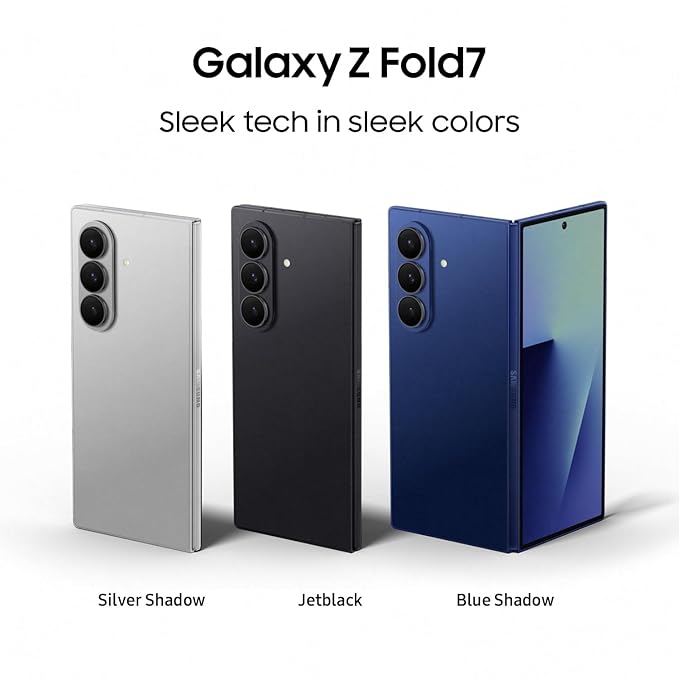
Samsung Galaxy Z Fold7 5G Smartphone with Galaxy AI (Silver Shadow, 12GB RAM, 256GB Storage), Ultra Sleek Design with 200MP Camera, Powerful Snapdragon 8 Elite, Google Gemini
Design & Display Features
One of the most exciting aspects of Samsung’s First Tri-Fold Smartphone is its revolutionary design—a leap beyond the current foldable standard. This device is expected to feature a triple-display layout connected through a G-shaped folding mechanism, offering unmatched versatility and screen real estate in a compact form factor.
Triple-Display with G-Shaped Folding
Unlike the bi-fold designs seen in the Galaxy Z Fold series, Samsung’s tri-fold concept introduces two hinges that allow the phone to fold in a G-shape—folding inward twice from each side.
This structure creates three connected screen sections that open into a nearly 10-inch tablet-sized display, offering an immersive viewing experience for work, play, and multitasking.
When folded, the device resembles a regular smartphone, complete with a dedicated cover display that allows for full functionality without needing to unfold it. This makes it easy to handle calls, respond to messages, or use apps on the go.
Approx. 10-Inch Main Display
When fully expanded, users are expected to have access to a 9.8 to 10-inch AMOLED display, making it ideal for everything from video streaming and gaming to reading and productivity.
The seamless continuity across the three panels is designed to eliminate visual interruptions, delivering a full-screen experience comparable to tablets—but in a much more portable form.
Cover Display and Portability
Despite its large internal display, Samsung is optimizing the tri-fold to remain pocket-friendly when closed. The outer cover display is expected to measure around 6.4 to 6.5 inches, giving users a familiar smartphone experience for quick access to essentials—without having to unfold the device each time.
This thoughtful design ensures the device offers flexibility without compromise: expansive when you need it, compact when you don’t.
Premium Materials for Next-Gen Durability
To ensure durability and strength, Samsung’s First Tri-Fold Smartphone is rumored to feature a titanium alloy frame—offering superior scratch and bend resistance while keeping weight down. The inner displays are expected to use the latest version of ultra-thin glass (UTG), allowing for repeated folding without compromising clarity or touch response.
Additionally, the hinges will likely incorporate reinforced mechanics developed over years of foldable evolution, ensuring the device can withstand the stresses of daily folding while maintaining smooth motion and long-term reliability.
With this futuristic design, Samsung aims to combine functionality, portability, and elegance—making its tri-fold smartphone not just a tech showcase but a practical everyday device.
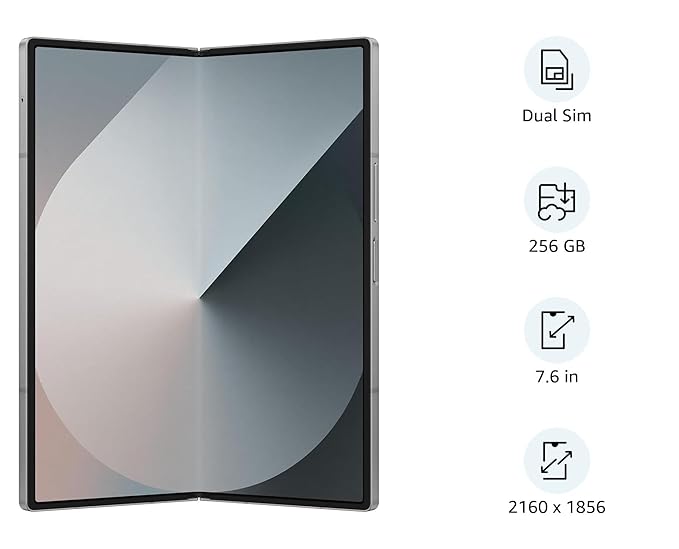
Samsung Galaxy Z Fold6 5G AI Smartphone (Silver Shadow, 12GB RAM, 256GB Storage) Without Offer
Hardware Specifications (Expected)
Samsung has a reputation for equipping its flagship foldables with cutting-edge hardware, and Samsung’s First Tri-Fold Smartphone is expected to take that a step further. Given the demands of powering a triple-display layout and delivering high-end performance across multiple use modes, this device will likely boast top-tier specs in every department.
Snapdragon 8 Gen 4 or Snapdragon Elite Chipset
At the heart of Samsung’s first tri-fold device is expected to be the Snapdragon 8 Gen 4 or possibly a more advanced variant like the Snapdragon 8 Elite, depending on its final release window. This next-gen chipset will offer significant improvements in CPU/GPU performance, AI processing, and energy efficiency, ensuring a smooth and responsive experience across all three display panels.
Whether you’re switching between apps, multitasking across split screens, or gaming on the full 10-inch layout, this chipset will be built to handle it all without compromise.
Up to 16 GB RAM and 512 GB+ Storage
To support intensive multitasking and enhanced productivity, Samsung’s First Tri-Fold Smartphone is rumored to come with up to 16 GB of LPDDR5X RAM. This will ensure seamless transitions between apps and smooth performance when running multiple processes simultaneously.
In terms of storage, Samsung is expected to start at 512 GB with options potentially going up to 1 TB, catering to professionals, content creators, and power users who need ample space for large files, videos, and media.
Advanced Battery Innovations
One of the biggest engineering challenges with tri-fold smartphones is battery life, given the need to power three displays and more processing cores. Samsung is reportedly working on a multi-cell battery system—possibly consisting of three separate battery modules working together to balance power and thermal efficiency.
While the total battery capacity could range from 5,000 mAh to 6,000 mAh, the real innovation lies in smart power management and adaptive refresh rate technology, which helps conserve energy when full display power isn’t needed.
Fast charging—likely around 25W to 45W—is also expected, although it may be slightly slower than traditional smartphones due to design constraints.
Reinforced Hinge and Internal Engineering
Given the added stress of a dual-hinge mechanism, Samsung is focusing heavily on improved hinge durability. Expect a more robust, precision-engineered folding system that builds on lessons from the Galaxy Z Fold lineup, featuring dust and drop resistance, a tighter folding radius, and a smoother, quieter open-close motion.
Samsung may also implement internal cushioning or shock-absorbing components near hinge lines to prevent display creases or damage over time—an issue previous foldables have faced.
Samsung’s First Tri-Fold Smartphone is shaping up to be a performance powerhouse designed for serious multitaskers and forward-looking tech enthusiasts. Its combination of high-end silicon, ample memory, efficient battery design, and advanced mechanics will push the limits of what a foldable phone can do.
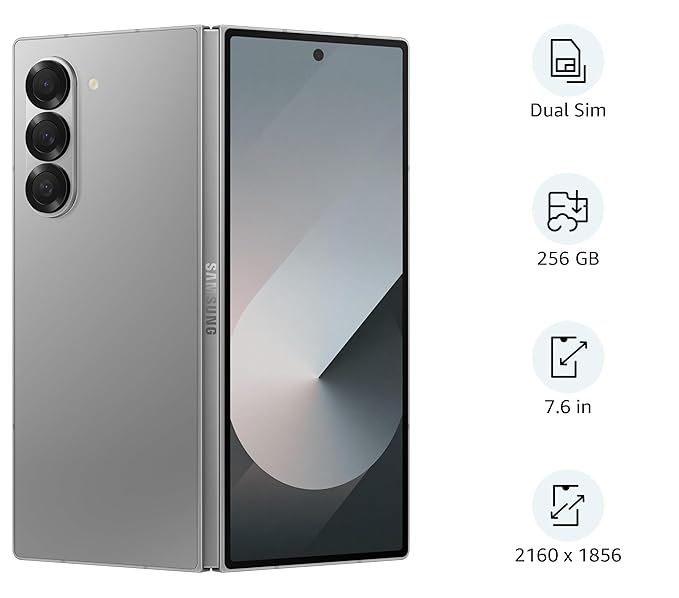
Samsung Galaxy Z Fold6 5G Smartphone with Galaxy AI (Silver Shadow, 12GB RAM, 256GB Storage), 50MP High-Resolution Camera, Snapdragon 8 Gen 3, Google Gemini
Camera and Software Innovations
Beyond its ambitious form factor and powerful internals, Samsung’s First Tri-Fold Smartphone is expected to feature major advancements in both camera technology and software.
Designed to meet the needs of professionals, content creators, and multitaskers, this device will deliver a blend of AI-driven photography and a customized software experience built specifically for its tri-screen layout.
Triple Rear-Camera System – Up to 200 MP
Leaked design schematics and insider reports suggest the smartphone will feature a triple rear-camera setup, with a flagship-grade primary sensor potentially reaching 200 MP. This sensor could be similar to the one used in the Galaxy S24 Ultra, bringing DSLR-like image quality to a foldable device.
In addition to the ultra-high-resolution main sensor, we can expect an ultrawide lens and a telephoto or periscope lens, offering flexibility for every kind of shot—be it landscapes, portraits, or zoomed-in details. The folding design may also allow for creative camera angles and more stable handheld shooting when the phone is partially unfolded.
AI-Driven Photography and Video
Samsung is expected to lean heavily on AI enhancements, using on-device machine learning to improve photography and videography. Features like:
- Scene recognition and optimization
- Real-time object tracking for videos
- AI image upscaling and noise reduction
- Automatic framing during video calls or vlogs
…will help ensure that the tri-fold device doesn’t just compete with current flagship phones—it sets a new standard for imaging on flexible devices.
One UI Enhancements for Tri-Screen Optimization
To complement the innovative hardware, Samsung will likely debut a customized version of One UI tailored specifically for the tri-fold form factor. This means:
- Seamless transitions between folded and unfolded modes
- App continuity across all three display panels
- New multitasking gestures and split-screen capabilities
- Dedicated modes for productivity, gaming, and entertainment
Users will be able to run three or more apps side-by-side, drag and drop content between them, and resize windows fluidly across the expanded display. Samsung may also introduce new taskbar layouts or quick-access features when the device is fully unfolded.
Integration of Galaxy AI and Productivity Tools
Following the success of Galaxy AI in the Galaxy S24 series, Samsung’s First Tri-Fold Smartphone is expected to integrate:
- Live Translate for real-time conversations
- Note Assist to summarize or organize content
- AI-generated image editing and design
- Smart suggestions for task management and scheduling
The device is also likely to include advanced DeX support, turning it into a desktop-like workstation when connected to a monitor—making it ideal for professionals who want to replace both a laptop and a phone.
From pro-grade camera systems to AI-enhanced multitasking, Samsung is clearly designing its first tri-fold smartphone to be more than just a concept—it’s shaping up to be an all-in-one mobile productivity powerhouse.
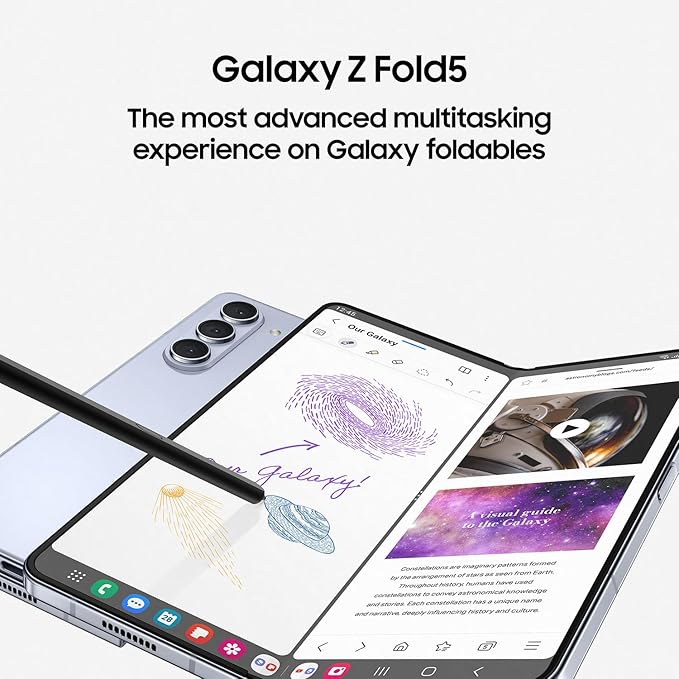
Samsung Galaxy Z Fold5 5G AI Smartphone (Light Blue, 12GB RAM, 256GB Storage)
Performance & Battery Life
With its triple-display setup and premium hardware, Samsung’s First Tri-Fold Smartphone will demand exceptional performance and battery efficiency. Samsung’s challenge lies in powering this next-gen device without compromising usability or overheating—especially during multitasking or gaming sessions.
Fortunately, all signs point toward a thoughtfully engineered system that balances power, speed, and endurance.
Power Efficiency Across Three Displays
Running three display panels simultaneously requires a massive amount of processing and GPU power. To ensure smooth operation, Samsung is expected to leverage the Snapdragon 8 Gen 4 or Elite chipset, which is built on a more power-efficient 3nm architecture.
This means significantly improved thermal management, dynamic power scaling, and AI-based resource allocation, which will allow the device to run efficiently even during heavy multitasking or extended use.
In addition, Samsung may integrate adaptive refresh rate technology (LTPO) across the displays, which enables the screen to automatically adjust its refresh rate (from 1Hz to 120Hz) based on the task—saving battery when high performance isn’t needed.
Multi-Cell Battery Architecture
To handle the increased power demands, Samsung’s First Tri-Fold Smartphone is likely to feature a multi-cell battery system, distributing smaller batteries across different segments of the device. This layout not only balances the weight but also enables better thermal dissipation and modular power management.
The total battery capacity is expected to range between 5,000 mAh and 6,000 mAh, depending on the final design and available space. Each battery cell would power a specific display section or internal component, coordinated by Samsung’s One UI software to optimize battery distribution intelligently.
Fast Charging & Battery Endurance
Fast charging will be essential, but it may be more conservative than seen on traditional flagships due to space and heat concerns in foldable hardware. Samsung is expected to offer fast charging speeds between 25W and 45W, ensuring that the large battery can be topped up in under an hour.
Wireless charging and reverse wireless charging (PowerShare) will likely be supported as well, allowing users to charge accessories like Galaxy Buds or even another phone on the go.
In terms of endurance, users can expect a full day’s use on a single charge, even with moderate multitasking—thanks to efficient display management and smart power-saving tools integrated into One UI. However, heavy users engaging in video editing or gaming may need to top up midday, as with most flagship foldables.
With its advanced chipset, smart display tuning, and carefully structured battery design, Samsung’s First Tri-Fold Smartphone is built to perform without sacrificing stamina—making it as dependable as it is futuristic.
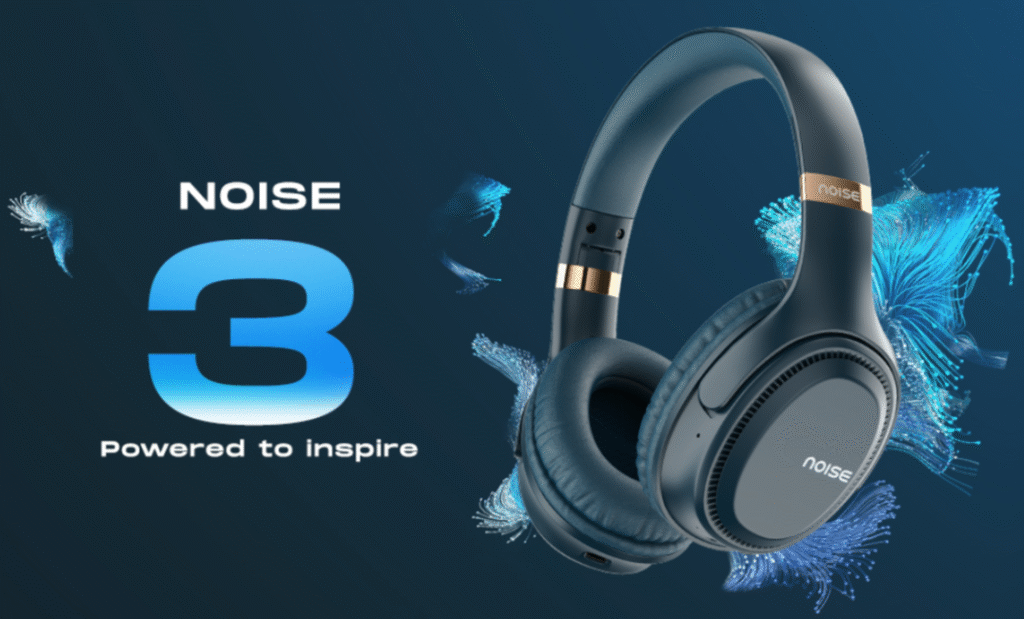
Expected Pricing and Availability
As a groundbreaking innovation combining premium design, complex engineering, and flagship-grade hardware, Samsung’s First Tri-Fold Smartphone will not come cheap. This device is positioned as a luxury-tier product, and its pricing is expected to reflect that.
Premium Price Tag: ₹2,00,000 to ₹2,90,000
Industry analysts estimate the tri-fold smartphone will launch in the price range of ₹2,00,000 to ₹2,90,000 (approximately $2,400 to $3,500 USD). This puts it well above the price of current foldables and conventional flagships, making it one of the most expensive smartphones ever released by Samsung.
The high cost is justified by its:
- Triple-display design and dual-hinge mechanism
- Titanium and ultra-thin glass construction
- Flagship Snapdragon chipset
- Advanced multitasking and AI features
For early adopters and tech enthusiasts, this pricing will be a reflection of its exclusivity and innovation.
Price Comparison: Z Fold 5 and Z Fold 7
To understand how Samsung may position the tri-fold, it’s helpful to compare it with the Galaxy Z Fold lineup:
- Galaxy Z Fold 5 launched at around ₹1,54,999 in India
- Galaxy Z Fold 7 is expected to start around ₹1,69,990
In comparison, Samsung’s First Tri-Fold Smartphone could cost 30–70% more than the Z Fold series due to its more intricate design, additional display panels, and enhanced internal components. However, it is not intended to replace the Z Fold lineup—it will likely exist as a super-premium alternative.
Limited Edition or Mass Production?
Initially, Samsung is expected to adopt a limited production strategy for its tri-fold device. Reports suggest an annual output of under 200,000 units, with availability focused on select high-end markets such as:
- South Korea
- United States
- India
- China
- Western Europe
This cautious rollout allows Samsung to gauge consumer interest, iron out supply chain and durability issues, and refine the software experience for a multi-panel interface.
If reception is strong and the hardware proves reliable, Samsung could scale up production in 2026, possibly introducing more affordable tri-fold variants or successors.
While its premium pricing may limit mass appeal at launch, Samsung’s First Tri-Fold Smartphone is clearly aimed at defining the future of mobile devices—setting the stage for more accessible tri-fold phones in the years to come.
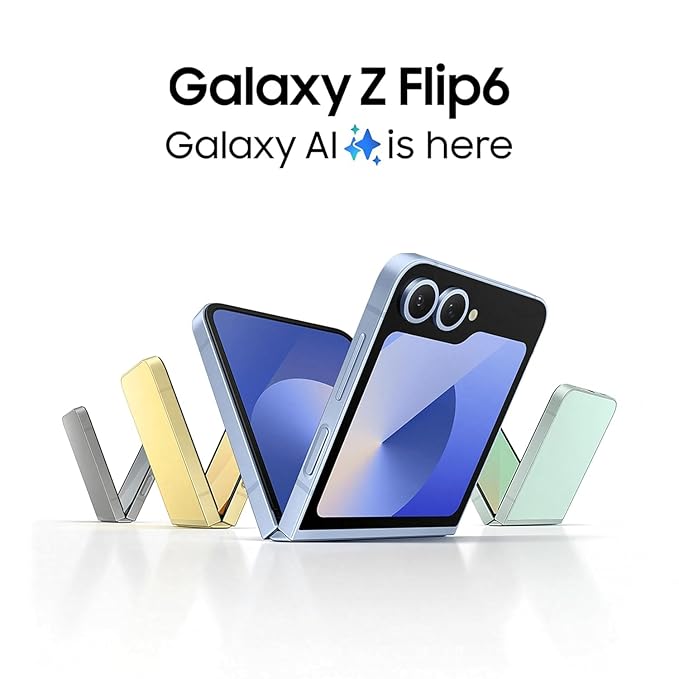
Samsung Galaxy Z Flip6 5G AI Smartphone (Mint, 12GB RAM, 256GB Storage) with Other Offers
Who is Samsung’s First Tri-Fold Smartphone For?
Given its futuristic design, powerful internals, and premium pricing, Samsung’s First Tri-Fold Smartphone isn’t built for the average smartphone user. Instead, it’s crafted for a very specific audience that values cutting-edge innovation, maximum productivity, and next-level entertainment. Here’s a closer look at who will benefit the most from this revolutionary device:
Tech Enthusiasts and Early Adopters
For those who always want to be first in line for the latest in mobile technology, the tri-fold smartphone is a dream come true. It’s a bold step forward in the evolution of foldables, offering a completely new form factor that sets the user apart from the crowd. With its triple-screen functionality and futuristic design, this device will appeal to:
- Gadget lovers seeking a unique, high-end experience
- Collectors of breakthrough tech
- Users who want to explore emerging UI/UX trends firsthand
For this audience, the tri-fold isn’t just a phone—it’s a statement.
Business Professionals and Power Users
Multitasking is a core strength of foldable devices, and the tri-fold takes it even further. With its expansive 10-inch display and optimized One UI features for tri-screen productivity, business users will be able to:
- Run multiple apps side by side (emails, docs, video calls, etc.)
- Use Samsung DeX to turn the phone into a portable desktop
- Jot down notes, attend meetings, and manage projects on the go
If you’re a frequent traveler, remote worker, or digital nomad, Samsung’s First Tri-Fold Smartphone could potentially replace your need for both a phone and a tablet—or even a laptop in some cases.
Content Creators and Mobile Gamers
The combination of a large, immersive screen, flagship camera setup, and top-tier processor makes this device an ideal companion for creators and gamers alike.
Content creators can benefit from:
- On-the-go video editing with enhanced multitasking
- Pro-grade photography and vlogging setups
- High-resolution previews and real-time project management
Mobile gamers will love:
- The ultra-large AMOLED display with high refresh rate
- Enhanced thermals and responsive touch
- The ability to use external controllers or create a dual-display gaming experience
In short, Samsung’s First Tri-Fold Smartphone is built for users who demand more from their devices—more power, more flexibility, and more screen space. Whether you’re a productivity pro, creative visionary, or tech trendsetter, this device is designed to elevate the way you use your smartphone.
Samsung’s First Tri-Fold Smartphone vs Other Foldables
With the launch of Samsung’s First Tri-Fold Smartphone, the company is entering a new dimension of mobile innovation. But how does it stack up against the current generation of foldables—especially its own Galaxy Z series and potential challengers like Huawei and Xiaomi?
vs Galaxy Z Fold 7 and Galaxy Z Flip 6
Samsung’s Galaxy Z Fold 7 is expected to be a refined version of its already successful dual-screen design, with improvements in durability, hinge mechanics, and AI features. However, the tri-fold smartphone introduces an entirely different category. Here’s how it compares:
| Feature | Galaxy Z Fold 7 | Samsung Tri-Fold Smartphone |
| Display Size | ~7.6-inch inner display | ~10-inch unfolded tri-display |
| Hinges | Single | Dual-hinge (G-shape design) |
| Multitasking | Up to 3 apps | 3+ apps across multiple panels |
| Portability | Compact but thick folded | Folded smaller, more layers |
| Use Case | Foldable phone | Phone + tablet hybrid |
| Innovation Factor | Incremental upgrade | Next-gen category |
The Z Flip 6, meanwhile, focuses more on compact style and affordability for casual users. The tri-fold is positioned much higher—aimed at professionals, creators, and premium customers.
vs Huawei and Xiaomi Tri-Fold Designs
Huawei and Xiaomi have both showcased tri-fold patents and concepts, but neither has released a commercial tri-fold phone yet. While Huawei was first to release foldables with outward folds and Xiaomi has developed foldable prototypes, Samsung is expected to be the first to bring a durable, mass-ready tri-fold device to market.
Where Samsung has the edge:
- Mass production capability
- Proven foldable experience (Galaxy Fold and Flip series since 2019)
- More reliable UI/UX integration
- Strong global brand trust and after-sales support
What Sets Samsung Apart
Samsung’s tri-fold strategy isn’t just about hardware—it’s about ecosystem integration, durability, and software polish. Here’s what truly differentiates it:
- Build Quality: Titanium frame, ultra-thin glass, robust hinge tested across generations
- User Interface: One UI optimized for tri-panel navigation, fluid app transitions, and multitasking
- Software Updates & Galaxy AI: Guaranteed long-term Android updates, exclusive AI features, and seamless connectivity with Galaxy tablets, watches, and PCs
- DeX Mode & Productivity: Samsung DeX turns the tri-fold into a mini workstation, unmatched by any current foldable from other brands
While other brands are experimenting with the tri-fold concept, Samsung’s First Tri-Fold Smartphone is poised to be the first to deliver a complete, polished product that balances form, function, and forward-thinking design.
Also Read: Tecno Pova 7 5G, Pova 7 Pro 5G Launched with Big Battery and 144Hz Display
Challenges Ahead for Samsung’s Tri-Fold Concept
While Samsung’s First Tri-Fold Smartphone represents a significant leap in mobile innovation, bringing such a device to market is no small feat. As exciting as this technology is, there are critical challenges that Samsung will have to overcome to ensure commercial success and long-term viability.
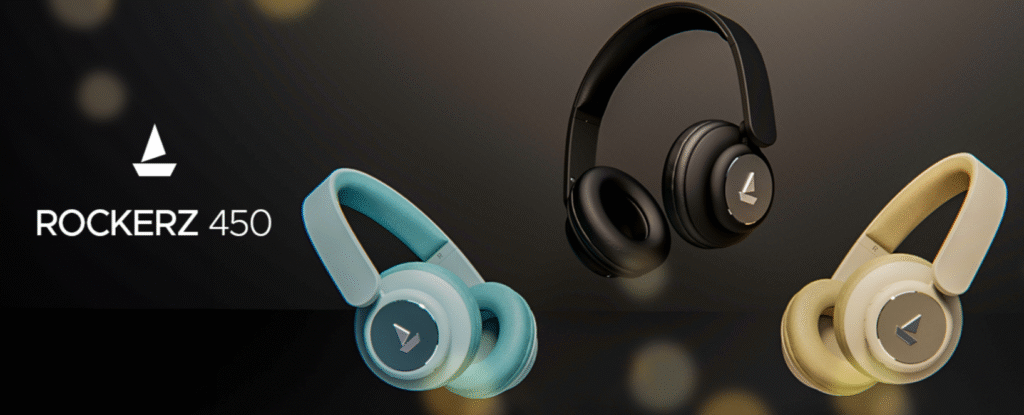
Durability Concerns with Triple Hinges
Adding a second hinge introduces additional mechanical complexity and potential points of failure. Foldable devices already walk a fine line between flexibility and fragility, and tri-fold phones raise the bar even further. The hinges must withstand:
- Thousands of folds and unfolds over time
- Pressure from being folded inward or outward
- Exposure to dust and micro debris, which has plagued early foldables
Samsung’s experience with the Z Fold and Flip lines gives it an advantage here, but the dual-hinge G-shaped design brings a new set of durability standards that will be scrutinized by early adopters and reviewers alike.
Software Optimization Challenges
Creating a seamless experience across three connected displays is a software challenge not yet solved at scale. Samsung must ensure:
- App continuity when folding/unfolding
- Support for multi-panel multitasking with smooth window management
- Compatibility with third-party apps, which may not be optimized for a tri-screen setup
- Avoiding UI bugs or input lag when switching between different modes
One UI will need deep customization, and Samsung’s partnerships with Google and key developers will play a crucial role in ensuring a polished and stable user experience.
Pricing as a Barrier to Mass Adoption
Perhaps the most immediate challenge is cost. With a rumored launch price between ₹2,00,000 and ₹2,90,000, the tri-fold smartphone will be out of reach for most mainstream users. Even early adopters may hesitate if the device doesn’t clearly demonstrate added value over existing foldables like the Galaxy Z Fold 7.
Samsung risks creating a product that is technologically impressive but limited in market penetration—a niche luxury item rather than a widely adopted innovation. To avoid this, the company must:
- Justify the price with unmatched utility
- Deliver durability and software stability from day one
- Possibly introduce lower-tier tri-fold models in the future
While Samsung’s engineering prowess gives it a head start, success with the tri-fold concept will depend on how well the brand can balance innovation with practicality, and whether it can translate tech ambition into real-world reliability and value.
Future of Tri-Fold Smartphones
With the anticipated launch of Samsung’s First Tri-Fold Smartphone, the tech industry is inching closer to a new era where foldables aren’t just a premium niche—but a mainstream category. While the tri-fold form factor is still in its early stages, its potential could significantly impact how we use mobile devices by 2026 and beyond.
Could Tri-Fold Become Mainstream by 2026?
The success of tri-fold smartphones depends on three critical factors: cost reduction, software maturity, and user demand. As Samsung and other OEMs refine hinge technology and display durability, production costs will gradually fall, making tri-fold devices more accessible to everyday consumers.
By 2026, tri-fold phones could follow a similar path as the Z Fold and Z Flip series:
- Start as a premium innovation
- Gain traction among power users and tech-savvy professionals
- Eventually lead to more affordable models or Lite editions targeting mass audiences
If Samsung can demonstrate clear advantages in productivity, content consumption, and portability, tri-folds may evolve from a novelty into a practical replacement for both smartphones and tablets.
Samsung’s Long-Term Foldable Strategy
Samsung has been clear about its ambition to lead the foldable revolution, and the tri-fold is a critical milestone in that journey. Over the past few years, the brand has:
- Filed patents for rollables, scrollables, and tri-fold formats
- Launched foldables in more than 100 countries
- Built an ecosystem (Galaxy AI, One UI, DeX, wearables) that supports foldable-specific features
With Samsung’s First Tri-Fold Smartphone, the company is signaling its intent to dominate the next phase of mobile form factor innovation—combining phones, tablets, and even PCs into a single, flexible device.
Beyond Smartphones: What’s Next?
Tri-fold technology isn’t limited to smartphones. In the next few years, we may see Samsung adapting this format for:
- Tri-fold tablets with detachable keyboards
- Foldable laptops with modular displays
- Wearable foldables with expanding displays for health or fitness tracking
- Gaming-focused foldables with controller attachments and dynamic screens
These future devices could bring computing-grade performance in ultra-portable formats, changing how we work, play, and connect across all areas of tech.
Samsung’s tri-fold initiative isn’t just a one-off experiment—it’s a vision of the future where displays bend to your needs, and devices adapt to multiple roles. The years ahead could see foldables becoming the centerpiece of the next-generation mobile ecosystem.
